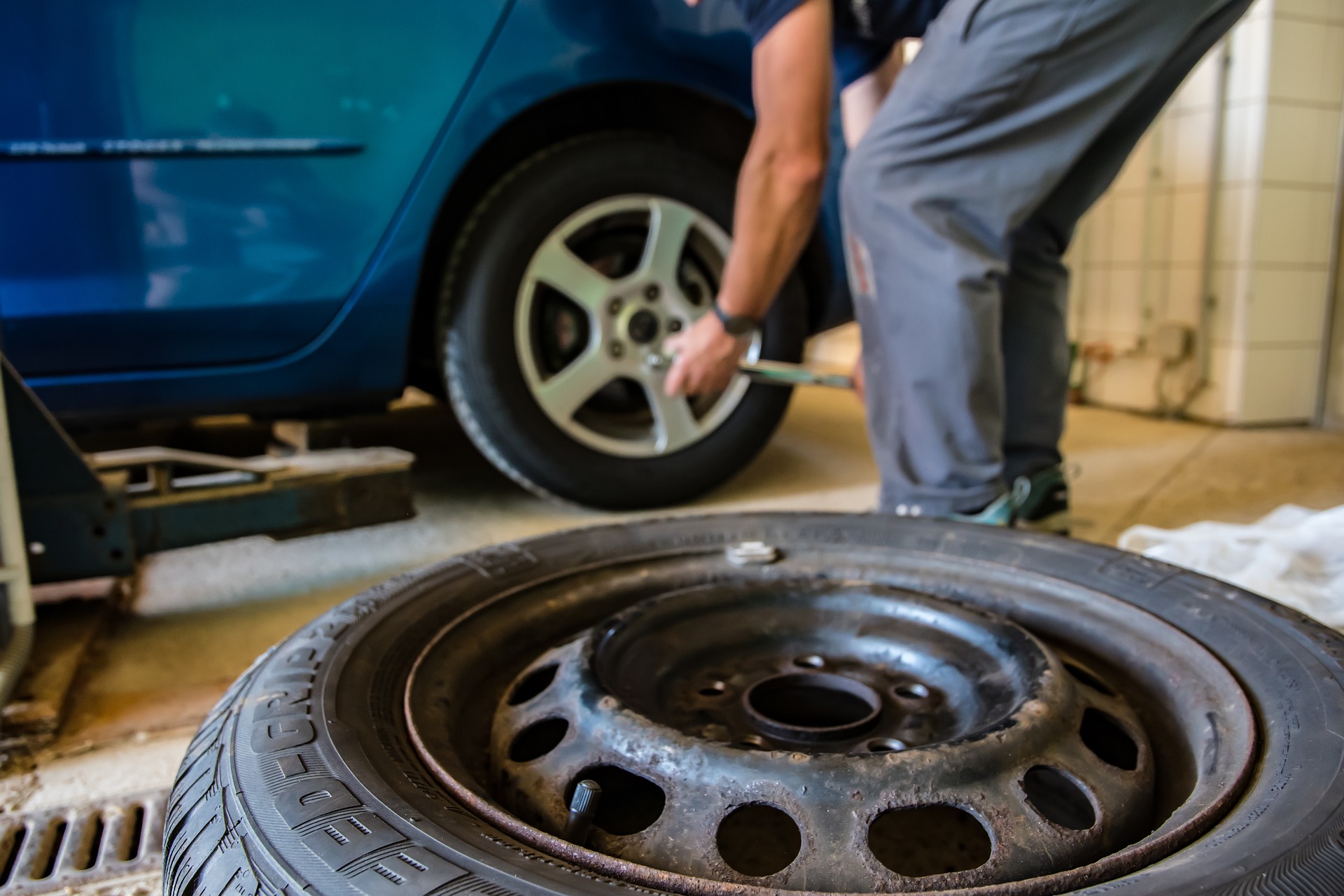
Even though summer is hanging in there with us, winter is right around the corner. And this is the time of year when many of us examine our tires to see if we need new ones before the snow flies.Clients often ask us how long tires should last. The answer is: It depends. The life of a set of tires depends on the age and quality of the tires, your driving and braking habits, and road conditions where you live.
4 Signs You Need New Tires
Here are some tips to help you evaluate your tires:
- Tread Depth: Legally, you must have 2/32 inch tread on the tires, which you can check with a penny. Place a penny into several tread grooves across the tire. If part of Lincoln’s head is always covered by the tread, you have more than 2/32 inch of tread depth remaining. To check for 4/32, do the same thing, except use a quarter and see if the tread touches Washington’s head. We recommend replacing the tires when the tread is at or below 4/32; we don't recommend waiting until 2/32 of an inch. Although it may seem like a negligible amount of tread, it will actually take you substantially longer to stop on tires that have 2/32 inch of tread. This increases the chance of an accident during a panic stop. Here's the skinny on that.
- Tread-Wear Indicators: Most tires have bars of hard rubber, known as tread-wear indicators, that appear across the treads as the treads get worn down. When these bars are flush with the adjacent areas of the tire, you're most definitely due for new tires.
- Bulges, Bubbles or Protrusions: A bubble in any part of the tire indicates that the inner liner has been damaged to the point that it’s allowing air to escape. This means there’s an increased chance for a blowout. It’s a safety issue that can’t wait for your next oil change. Get the car into the shop ASAP.
- The Sidewall: Similar to Tip #3, check the side of the tire for tracks, cuts or grooves in the sidewall, which could mean the tire is developing a leak or is about to blow out. This is a safety issue that should be address immediately.
5 Ways to Help Your Tires Last Longer
For most vehicles today, new tires are a hefty investment. Here are some tips for maximizing the mileage you get on a set of tires:
- Heed your "low tire pressure" warning light. According to studies conducted by the National Highway Traffic Safety Administration on tire-related crashes, the leading cause of tire failure is under inflation, which causes premature and uneven tread wear on the outer edges. Proper tire pressure is so important that the government requires all light motor vehicles (including passenger cars) made after Sept. 1, 2007, to be equipped with a tire pressure monitoring system (TPMS). This alerts you (via a dashboard light) when your tire pressure falls below a certain threshold. If this light comes on, check your tire pressure and add air if necessary. The recommended pressure for your car’s tires is usually found in the owner’s manual and on a sticker inside the driver’s door or inside the glove compartment. If you have a car that's not equipped with TPMS, check the tire pressure at least once a month. Note: Do not inflate your tire to the PSI indicated on the side of the tire. This is maximum tire pressure for that tire. It is not the optimum tire pressure for your vehicle.
- Rotate your tires. Tires may wear differently depending on their position on the vehicle, your driving style and the condition of your suspension. Regularly rotating your tires helps evenly distribute tire wear—helping you get the most miles out of your tires while maximizing traction on all four wheels. Rotations should be performed about every 6,000 miles or so. We will evaluate your tires during an oil change and let you know if we think they should be rotated.
- Keep your wheels balanced. Your wheels can be thrown out of balance by day-to-day tread wear, continuous driving on rough roads, and hitting a jarring pothole or curb. Given the condition of our roads in the Chicago area, we recommend having your wheels balanced once a year. A wheel that's out of balance can cause a bothersome shimmy or vibration while you're driving, and it leads to more rapid tire, steering and suspension wear.
- Ensure your wheels are properly aligned. A car that is out of alignment has a tendency to pull and drift from the center line, and you may find yourself fighting to keep the steering wheel centered. This can cause rapid and severe tire wear, and it may feel like your car is “wandering” down the highway. We recommend having the vehicle aligned once a year, or as needed, if you hit a pothole or curb with excessive force.
- Modify your driving habits. The way you drive has a huge impact on their lifespan. Try to avoid potholes, quick starts, fast turns, abrupt stops, speeding, curbs, road debris and heavy loads.
Not sure about the condition of your tires? Stop in today at Auto Lab in Libertyville, and we’ll be happy to inspect them for you and ensure your tires are roadworthy.Need more information? Here are some related articles:



